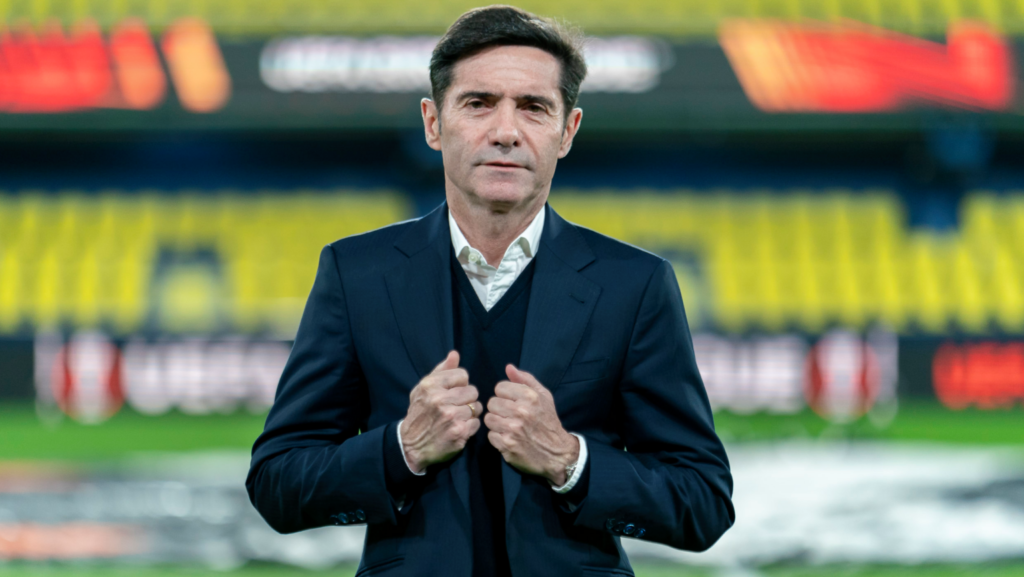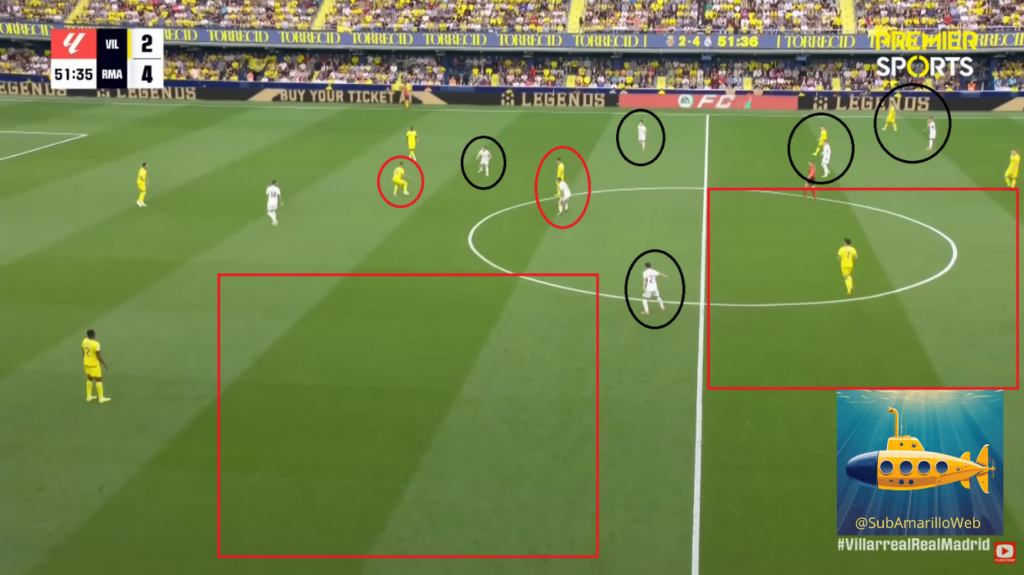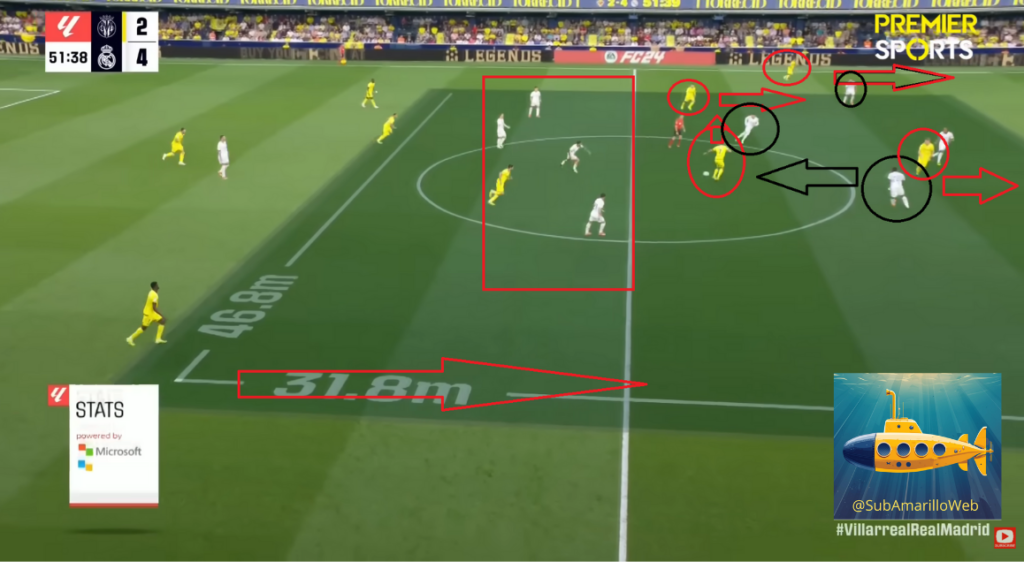
The summer transfer market has been quite active for Villarreal CF. After Marcelino's arrival midway through last season, the club committed to restructuring the squad to suit the new coach.
Rumores y noticias sobre ventas y fichajes han inundado nuestras redes sociales, pero todas tenían algo en común. Tanto las salidas como las llegadas tenían la característica de estar relacionadas con su adaptación o encaje al «estilo Marcelino» pero… ¿Qué es el estilo Marcelino?
The Asturian coach employs a 4-4-2 system. It might seem basic, the most standard formation, but Marcelino focuses heavily on the details and individual roles of each player to create a much more complex system. The core of his style can be described as a solid defense, based on pressing and reducing space. With this defensive base, compact and with lines closely knit, he builds a counter-attacking strategy with quick transitions, relying on players who can slip between the opponent's lines to disrupt their formations, create spaces, and exploit the individual skills of fast wingers or lethal forwards.
We’re not saying that Marcelino is a coach who focuses solely on defense, but he places a great emphasis on defense as the foundation of his system. Quick ball recoveries, combined with rapid transitions, are a deadly and effective combination that makes opponents pay dearly for even the slightest mistake. Another defensive strategy involves long possessions, moving the ball from side to side, and analyzing the opponent's system and its patterns.
Thanks to this, the players gather information about the movements of the rival defense to make the best decision during transitions (whether to play on the flanks, through the center, or with long passes...). Today, we’ll analyze the attacking aspect.
Attack

In this image, we can see Marcelino's offensive style. We observe a line of defenders passing the ball side to side to force the pressure from Real Madrid's attacking line. This movement allows the analysis of Madrid's system mechanics.
Marcelino likes his full-backs to make runs along the flanks, positioning the wingers deep into the opposing half and close to the touchline. This opens up the field for space creation in the middle. After circulating the ball from side to side, a midfielder drops back to receive the ball from one of the defenders. This forces the first decision-making moment for Madrid.
- 1. Modric pressed on the lateral zone and tried to cover the passing line to the central circle. This movement frees up the Villarreal player from Modric, who is left outnumbered. Several options open up here: playing the ball forward or to the flanks. Real Madrid's wingers (Guler and Brahim) close the field to reduce central spaces, which creates room on the flanks for either the full-backs or wingers to receive the ball or initiate an attacking transition. The other Madrid midfielder is forced to cover his man to prevent Villarreal from advancing through the center. As seen in the upper part of the image, the attacking midfielder and winger are man-marked and do not move to seek the ball, avoiding drawing defenders into the center and closing spaces. This also happens on the other flank, though it’s not shown in the image.
- 2. Guler and Brahim attempt to close the central passing lane without neglecting the positioning of Villarreal’s full-backs, who could find the flank open. This creates a space in the midfield between the defensive line and midfielders. Gerard, the sharpest player, takes advantage of the situation and breaks his line to make a run into the space created in the middle by the Villarreal midfielder’s movement. The image shows Brahim noticing and pointing to Gerard Moreno to alert a teammate to cover him, but it’s too late.

The next movement by Villarreal is crucial in this play.

Comesaña, que estaba cubierto al hombre en la parte superior del círculo central, sabe de la posición de Gerard, por lo que lleva a cabo un movimiento muy táctico conocido en el mundillo como «quitarse de en medio». Santi realiza el movimiento contrario a Gerard y pivota hacia la derecha del campo, creando línea de pase hacia el 9, que recibe totalmente solo. Como se puede apreciar en la imagen, con 1 solo pase, dejan a los mediocampistas del Madrid fuera de la jugada. Este movimiento genera otro problema de toma de decisiones a jugadores del Madrid.
- 1. Rudiger faces a decision: should he step up to cover Gerard, or let him advance unopposed? In this situation, he chooses to confront Gerard, as he is his assigned marker, while his teammates cover the attacking midfielder and the winger. However, Rudiger arrives late, creating a gap in the central defense of Madrid. Sørloth spots this gap and uses it to make a run.
- 2. Gerard has several options: he can play a short pass, pass to the flanks, or look for Sørloth. Rudiger's movement and Sørloth's subsequent run tip the balance, and the pass ends up going to the Norwegian forward. The left-back for Madrid cannot cover that gap because, as you may recall, Marcelino likes to use fast and skillful wingers who play high and wide on the pitch. Closing the gap left by Rudiger would create free space for the wingers.
Ultimately, thanks to Sørloth’s skill and a bit of luck with a rebound, Villarreal finishes the play with a goal from just three passes starting from the defensive line.
Here is the complete play for you.

